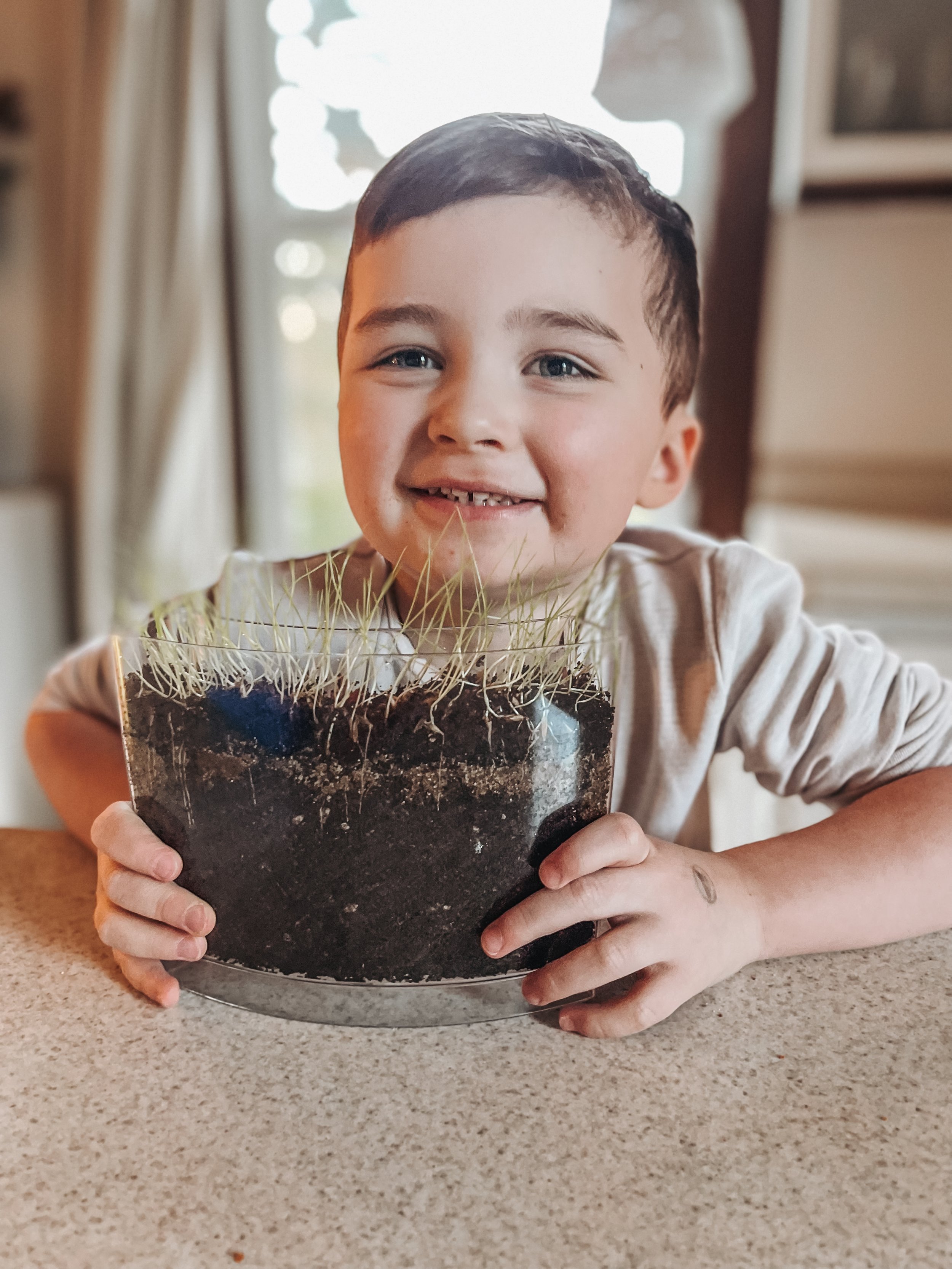Spring Focus: Worms
Welcome to our little unit on W O R M S.
In this blog post you’ll learn some things about worms with us! I chose to do this following our bird unit because well, birds eat worms! I knew it would be an easy concept for the littles to grasp onto and be able to flow into from the last and still be able to enjoy watching our birds in the feeder and still talk about them too if they wanted.
I grabbed a few books at the library, we learned a few poems, learned about the anatomy, fun facts and life cycle of a worm and we made a womery! The kids weren’t huge fans of touching the worms this year but they have been enjoying watching the creation of our wormery come to life and the little activities we did throughout this time.
I have a 2 year old, 3 year old and a special needs child (cognitively another 3 year old) so my plan is always to keep it simple but still meaningful and fun!
Read ahead to see all of our photo memories + supplies we used for different things. I’ll link everything that I can below this post for you for reference.
I purchased an Earthworm Unit Study from Etsy for a couple dollars. I kept out what my kids would be able to focus on now and saved the rest for another year when we can use again and dig deeper!
The books we used for worm learning this time:
Worms For Lunch by Leonid Gore
Worms by Susie Williams
Fingerwiggly Worms by Felicity Brooks
Our family project that we worked on together was making our own wormery!
This project was good for sensory, helping each other, fine motor skills, allowing them to be messy, seeing what a worm looks like up close and how they live in nature. It also gave them a sense of responsibility having to have to check on them daily, narrate to me what they see or what has changed and water the wormery to keep it moist.
A WORMERY
This was something I decided to order for this time just because it was a little early to find the good worms outside yet this season and I wanted to keep our learning time moving along. I purchased this kit off of Amazon specifically because it came with some worms, but you can definitely create your own at home (which we will do in the future) with the supplies that is needed to make a wormery. I also liked this kit because it came with a thinner container to be able to view the worms and roots a little better than a normal sized jar would allow.
The supplies:
container (with a light lid and holes added)
soil
sand
worms
grass seed for the top (optional but fun to see the roots grow!)
a couple torn up leaves
step #1
Soil + Worms
This kit and size of container called for about one cup of soil or dirt. Add the worms into this step as well, just be careful so you do not hurt them in the transfer process.
step #2
Sand.
Pour about a 1/2 inch layer of sand (it called for a dusting) on top of the soil. I literally got my sand from a nearby playground!
step #3
Soil.
Another thinner layer, about 1 inch of soil on top if you’re not using this kit. This layer from the kit came with some extra nutrients to help with the grass and things etc.
step #4
Toppings
This is the layer you can lay down your grass seeds or tiny bits of crunched up damp leaves.
step #5
Water
Add a small dropper full of water along the length of the wormery. You only want to make sure it stays damp throughout the days and not dry out, be sure not to over water it.
When you are finished with this step, add the lid with holes and put against a wall with a paper covering the front. Worms like the darkness and will be more active away from light. When you want to check on them you may remove the covering and take notes on the changes you see. You may even start to see their tunnels forming!
A few days later we checked on our worms, looked at some dead worms up close that I found outside (haha), read a few books and ate gummy worms for a snack!
Worm, Worm Slippery Slide,
I smell a Bird and I Better Hide.
Down, Down Under the Ground,
Wormy, Squirmy, Round and Round.
A few activities we worked on were:
size arranging, counting puzzles + matching
fine motor wrapping a cardboard worm with yarn
sensory with dirt + spaghetti noodles
My overall observation for this family unit focus was simple, slimy + fun.
We took this unit slow and wanted to enjoy every single thing we were doing and be able to step back and observe nature and enjoy being able to watch how worms are in nature. Even after these documented photos, we are still enjoying the wormery! The grass is still growing in thicker and you can see the tunnels the worms have made.
Here are all of the links for you if you’d like to do a worm unit with us!
If you decide to do something through our unit choice, please tag us so we can see what your home looks like learning about worms! We’d love to see!
@lifeinthelyonsden
@ourhopefulhomeschool
xx
BOOKS
Worms For Lunch
Worms
Fingerwiggly Worms





























